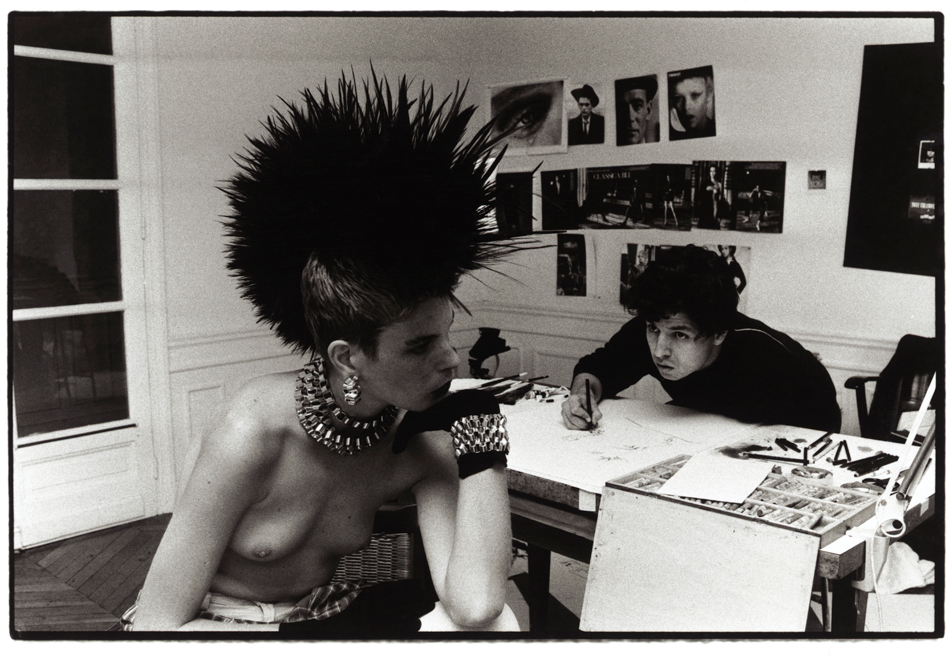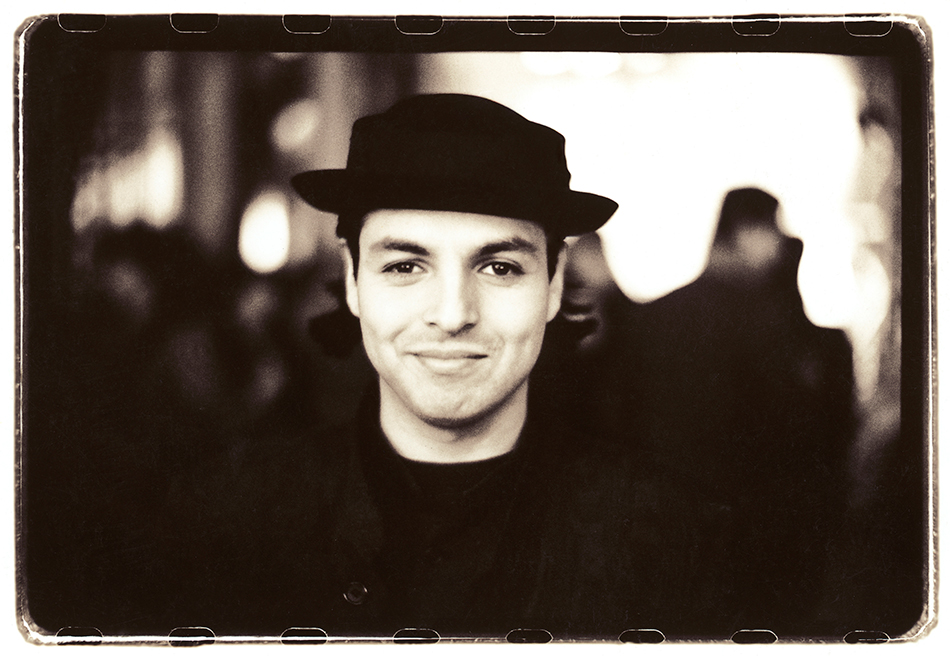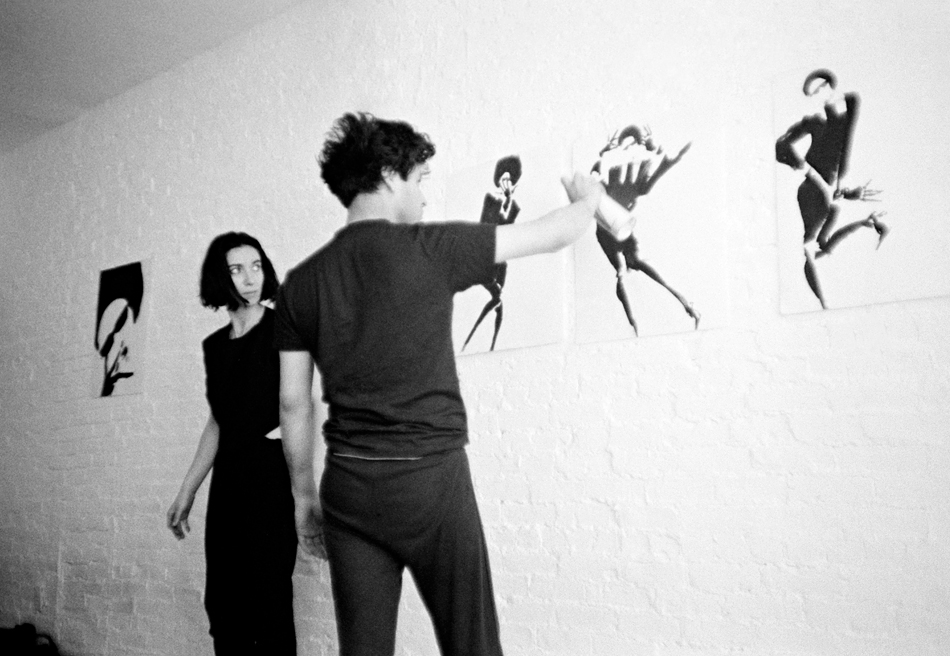
September 2013A Viramontes drawing of a Christian Dior evening dress for Le Figaro
from 1986, now available on 1stdibs.
When we think of fashion illustrations in the 1970s and ’80s, the name that immediately comes to mind is Antonio Lopez, the charismatic artist whose drawings of Jerry Hall and Grace Jones came to define the era’s sexy, Studio 54 aesthetic. But Lopez wasn’t the only one whose work filled the pages of Vogue and Harper’s Bazaar in those years. Although more than a decade younger than Lopez, an ambitious and furiously talented artist named Tony Viramontes traveled in the same glamorous New York and Paris fashion tribe, with editors and designers from Jean Paul Gaultier to Claude Montana to Valentino regularly seeking him out. Prolific, influential and widely recognized in his heyday – he created the iconic cover of Janet Jackson’s 1986 album Control — Viramontes has been largely neglected in the years since his death from AIDS in 1988, when he was only 31.
The publication of a new book, Bold, Beautiful, and Damned (Laurence King) by Dean Rhys-Morgan, a fine-art print publisher and former fashion journalist, will undoubtedly help correct that. The monograph recounts Viramontes’s story from his days as a student and aspiring illustrator in New York during the early 1980s to his discovery by the Japanese couturier Hanae Mori, who encouraged him to go to Paris. It then continues as his career took off, chronicling his steady work both in the City of Light and back in New York for the likes of Dior, Chanel, Givenchy, Valentino, Blackglama and many others.
On Collecting Fashion Illustration
by Amy Fine Collins
The early influences on my style were not real women at all but rather the mid-century fashion illustrations from Vogue and Bazaar that my mother had banished to our attic, along with a trove of her own sketches, all souvenirs from an abandoned career in design. As a child and adolescent I drew, too, forever frustrated that my figures didn’t attain the fluidity of my mother’s. So I moved on, first to art history and eventually to magazine journalism. Then, as Freud would say, came the return of the repressed. I found that though I couldn’t possibly afford the Old Master and modern art I had studied in graduate school, I did, to my surprise, have sufficient means to buy pictures by the masters of fashion illustration. With the rise of photography and abstract and conceptual art, and the disappearance of life-drawing from studio-art programs, fashion illustrators seemed to me to be the last exponents of the great Western figurative tradition.

A Viramontes sketch shows a dramatic headdress by Stephen Jones for Jean Paul Gaultier’s Spring/Summer 1984 collection. Gaultier has written the foreword to a new monograph about the artist.
The first images I bought were a series of gouaches that Marcel Vertès had made in the 1930s for Schiaparelli perfumes. Regular forays into flea markets, auction houses and thrift shops yielded further Vertès miscellany — screens, needlepoint pillows, fabric and lithographs. Soon I added to this ever-expanding Vertès stockpile the hyper-sophisticated images of Eric. I found several of his Vogue covers from the 1930s and ’40s as well as portraits by him of Barbara Hutton and Sophie Tucker. I have since gathered about me the handiwork of many other superb 20th-century practitioners of the genre – among them Christian Bèrard, Willaumez, Antonio, Gruau, Ruben Toledo, Kenneth Paul Bloch and Joe Eula, who one afternoon dashed off a graphite likeness of me in a head-to-toe leopard ensemble. I branched out and acquired croquis, some still with attached swatches, by the designers themselves. Yves Saint Laurent, Karl Lagerfeld, Edward Molyneux, Carolina Herrera and Gene Meyer now share wall space with my mother’s circa 1950 depictions of haughty, fancifully draped ladies.
The peerless draughtsman and multi-media image-maker David Hockney helped teach us that the camera can lie more than any paintbrush or pencil. As digital technology has transformed the photograph into raw material for manipulation, and nearly everyone into a photographer, the taste for hand-drawn fashion illustration has finally returned. In Vanity Fair we now regularly see the exquisite, dreamy renderings of David Downton. Christian Dior Beauty has its own artist in residence, Bil Donovan. And an iPad app called Paper by 53, which is sometimes used for on-the-spot runway sketching, has won an Apple award. So, thankfully, we once again have a receptive audience for the oeuvre of Tony Viramontes, who is, in my view, an ’80s Egon Schiele to Antonio’s more suave Gustav Klimt. I am very pleased, due to the inspired intervention of Dean Rhys-Morgan, that Viramontes’s reputation has been revived and that, as a result, I have added my first three images by him to my collection, including a neon-bright collage for the short-lived Vanity magazine. Ludwig Bemelmans, creator of the Madeline storybooks, observed that a good illustration should be composed with alacrity, instantaneity and facility, so it “sits on paper as if you smacked a spoon of whipped cream on a plate.” Viramontes’s drawings instead streak like hot cinders across the page, where they continue to gleam and smolder.

Left: Viramontes’s advertising campaign for Blackglama furs appeared in the French publication La Mode en Peinture around 1984. Opposite: The artist in Paris, 1986. Right: A sketch of a sable-trimmed gold evening suit, designed by Karl Lagerfeld for Chanel Haute Couture in 1984, is among the works available in the Viramontes capsule collection on 1stdibs.
While writing the book, Rhys-Morgan was able to draw from a remarkably rich archive of material. He recalls receiving an email a few years ago from one of Viramontes’s brothers: “Ed said, ‘If you’re ever in LA, I’d like to show you my brother’s work,’ ” explains Rhys-Morgan, who eventually paid a visit to the Viramontes family house in the Valley. He was astonished to find, stored in the garage and a bedroom, sheaves of art work plus Polaroids, tear sheets and notes that Ed had retrieved from Tony’s Paris apartment. “I knew I was never going to find another archive that complete,” says the author, who set out to research the book almost immediately. “Tony reinvigorated the art of fashion illustration, but no one knew much about him. I just felt the book was something that had to be done.”
Beginning today, a selection of 27 works by Viramontes are available exclusively on 1stdibs. Among the pieces offered are two alternatives to the Janet Jackson cover, several Polaroids of Viramontes’s friends and models and a sketch of a Chanel couture evening suit, which Morgan considers a masterpiece. Also not to be missed: Illustrations by Viramontes will fill the windows of Bergdorf Goodman through the end of fashion week (September 12) in New York.





